In the treatment of ophthalmic pathologies, eye operation is considered the most effective way.Thanks to modernized medical technologies, eye surgical interventions are performed very quickly.They virtually do not cause damage to the eyeball, but sometimes unforeseen complications may occur.As each operation has its own against -indications, the type of surgery is selected individually, depending on the type of disease.To reduce the risk of unsuccessful results after therapy, doctors recommend that you do all the necessary tests.
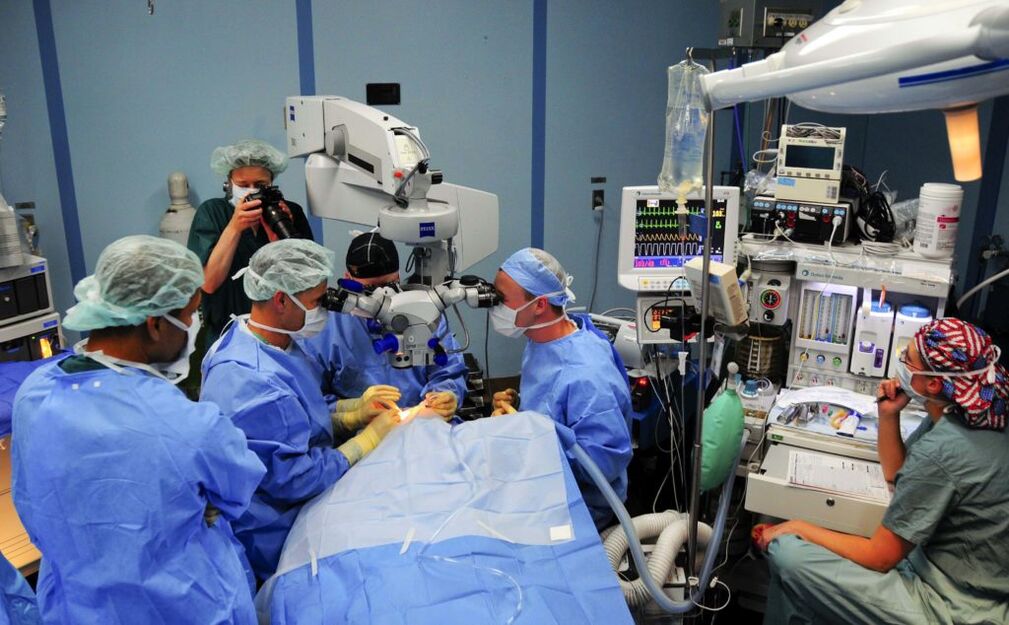
Nominations
The procedure is prescribed after a complete visual inspection and all necessary diagnostic procedures.Any operation is a risk, therefore, before advising the operation, the doctor will try conservative treatment methods using drug therapy.Surgery is prescribed only if medications do not provide the desired results.Surgery Indications:
- Dystrophy of the eye;
- Belm formation in the cornea;
- KERATOCONUS;
- traumatic damage to the visual organ;
- Keratoglobus;
- Serious pathological changes in the organ.
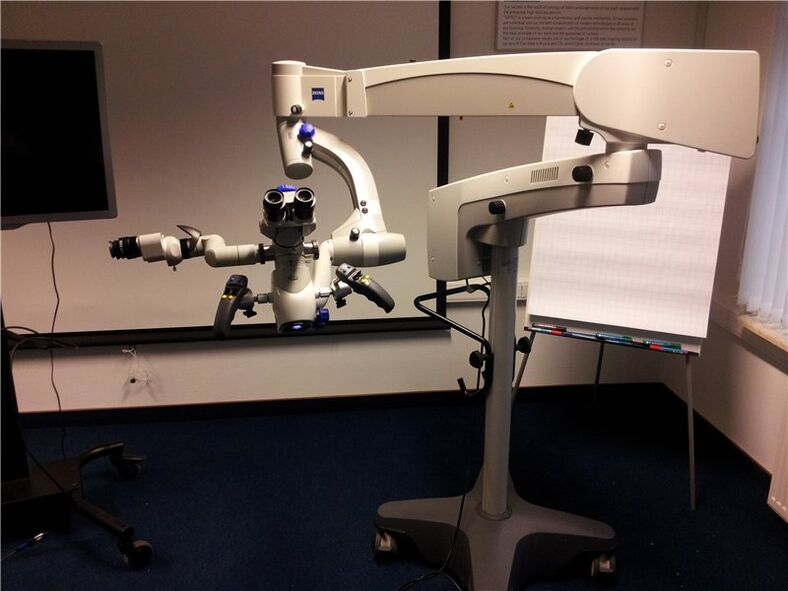
Types and conduct
Before the operation, it is necessary to go through diagnoses, the doctor will express the list of tests at the consultation.Vision correction methods are individually selected by all patients, they can be recommended to patients with cataract, myopia, strabismus, halazion, glaucoma and other dangerous deviations.During manipulations, ophthalmologists use modern medical equipment, the intervention is performed using a microscope, the vision is adjusted through very small incisions.As the operation is simple and low, long term hospitalization is not required.After 2-3 hours, the doctor explains in detail to the patient all the nuances of the recovery period, such as taking care of the eyes and leaving home.The hospital is recommended only with severe pathologies (retinal detachment, serious inflammation, penetrating wounds).There are these types of operations:
- laser surgery;
- Vitrectomy;
- Trabechraclectomy;
- LTP, Lie;
- FOCUSMULSIFICATION;
- Scleroplasty;
- keratoplasty;
- Eye enucleation;
- Refractive substitution of the lens;
- RETICULATION;
- Anti -Habomatous Operations.
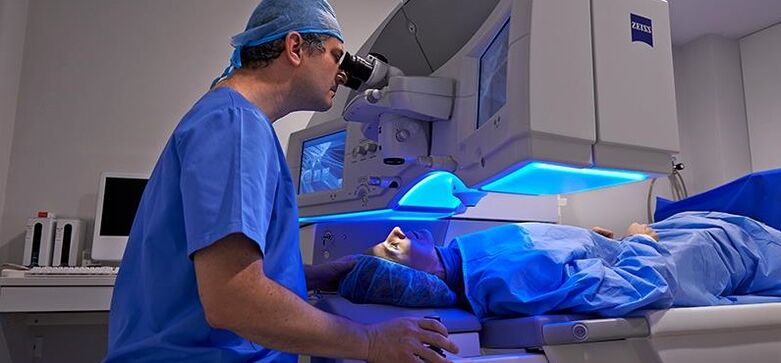
Laser vision correction
Do the operation for retinal damage and ruptures.Before agreeing, the patient should undergo a full exam.Drops that expand the student are dripping before the intervention.With the help of a laser, the eyes are made by microcurgery (weak areas of tissues are welded), this prevents fluid penetration and subsequently the detachment.The laser coagulation of the retina is simple, it takes several minutes in time, until the children tolerate well.
The operation occurs under local anesthesia.During the recovery period, the patient is recommended to abandon active sports, bad habits and physical overloads.The negative consequences of laser vision correction can manifest within 3 hours - this is an increase in tears secretion, photophobia, redness, discomfort and rubbing in the eye.Doctors do not recommend this procedure under 18 years old.The percentage of vision restoration after laser correction is very large.
Keratoplasty
With irreversible pathological changes in the eye, Okulists recommend this procedure.The operation to restore vision and eyes after the lesion consists of the complete removal of pathologically altered tissues of the cornea, which are then replaced by the donor.There may be many reasons for surgical intervention - it is keratoconus, serious damage to eyeball tissues, EED, ulcerative changes caused by fungal infections and genetic predisposition.In surgery, local anesthesia is used.Using the instruments, the doctor needs to remove the painful cornea and replace it with a healthy, after which the seams are applied.Time takes about 2 hours.The recovery period is 1 year.Eyes are recommended to protect with glasses, this will prevent organ injuries, complications after surgery.
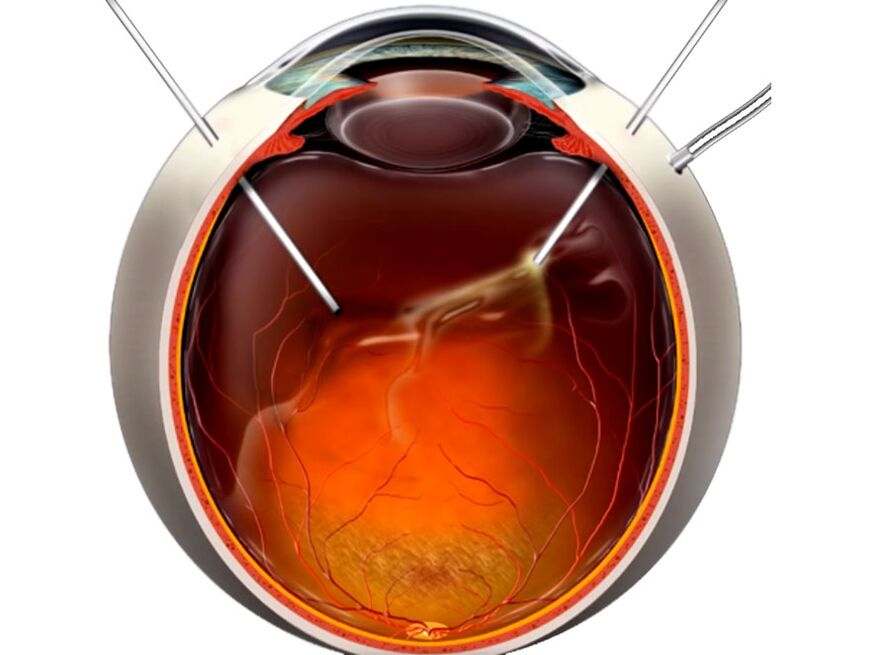
Vitrectomy
Make the vision correction with pathologically altered retina and when removed.Thanks to professionally conducted manipulations, the doctor will have access to the back side of the eyes.After removal, the vitreous body is replaced by the donor material.A saline solution, silicone oil, polymers and composite compounds of -Urgente are used as a special liquid.In ophthalmology, vitrectomy is considered a micro -vasic methodology, interference in the visual organ system is minimal, this contributes to the patient's return to the patient.With the help of this method, it is possible to restore the structure of the retina to prevent the development of pathologies, whose names are traction and retinopathy.
Since air is filled with many dust particles in order to avoid infection after organ correction, it is necessary to paste the eye firmly with a dressing for some time.
Anti -Habicomatous Operations
Ocular surgery should be used if drug treatment is not authorizing and only after a complete examination.This type of intervention does not cause pain, it is done rapidly, usually prescribed for the treatment of closed and open glaucoma and when the vessels germinate into the eyes.The essence of the procedure is to eliminate accumulated fluid within the organ, is performed by a laser.The most effective methodology is considered deep sclerectomy that does not reproduce.In the therapy process, the corneal layer interprets surgically, thus reducing increased intraocular pressure.The possible consequences of such operations can be expressed in the formation of scars;At first the eyes can be red.
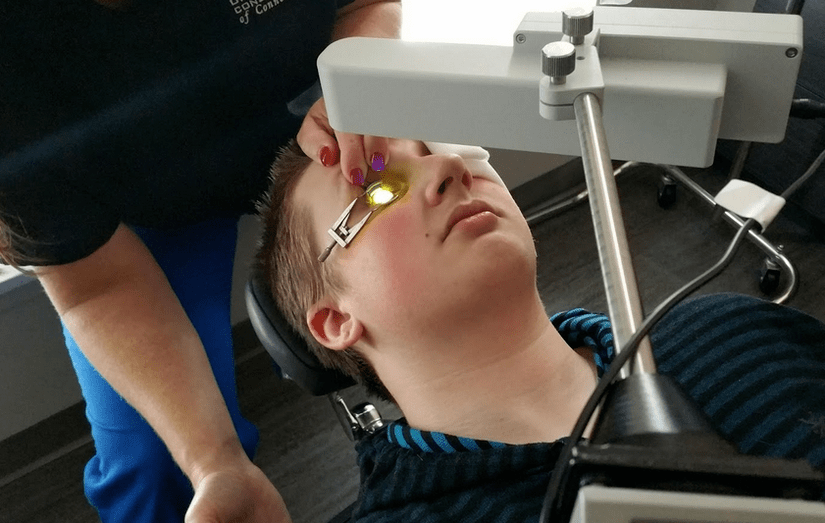
Reticulation
A relatively new method of keratoconus treatment using -O can prevent the development of the disease in the early stages.Using a tool whose name is a boring lamp and dripping vitamin B in the ocular socket2, it is possible to strengthen the cornea and stabilize the patient's condition.The advantage of the procedure is that manipulation is performed only once, 1 hour is sufficient to perform it.After reducing the risk of injury, a special protection lens is placed on the eyeball.
Eye enucleation
This is a complex surgical operation, is prescribed only in extreme cases, if an organ cannot be saved differently.The eyes are completely removed from eye socket, and the fiberglass prosthesis is implanted in its place, it will seem real.When conducting, side effects can develop, these are unforeseen inflammatory processes and implant displacement.The testimony includes pathologies such as:
- glaucoma in a terminal degree;
- the appearance of pain and the development of inflammation in the blind organ;
- Severe lesions and neoplasms.
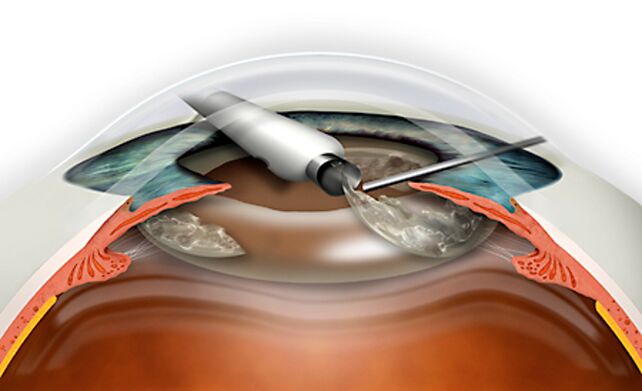
Refractive Lens Substitution
During surgery, the damaged element of the visual system with an artificial system occurs.When selecting an intraocular lens, the patient's individual characteristics are taken into consideration (age, gender).The procedure lasts 25 minutes, local anesthesia is used, surgical manipulations occur without blood.Through microdnaras, using ultrasound, the lens is transformed into an emulsion and removed from the eye.Refractive replacement is done with pathologies such as:
- performing myopia and hyperopia;
- presbyopia;
- prohibition on laser correction;
- High degree hyperopia, which can cause glaucoma;
- Infringement of refraction and rapid loss of visual function.
Vision Correction EXCLOODERLAZER
Surgical intervention is recommended for eye pathologies such as strabismus, astigmatism, myopia.There are several ways to accomplish, this is a Femo Lasik, the Federal Republic of Penal Code, Lasik.The doctor cuts the upper layer of the cornea, its curvature is changed using a cold beam of an excessive laser, it is better to use local and mediocre anesthesia.After a correction of eximmerlazer, the patient gets rid of the problem as the procedure is effective at 99%, in front of other interventions.An unsuccessful operation leads to the correction of hyper -ridiculation, and the corneal layer seems inflamed.
Correction of strabismus
Eye surgery of strabismus aims to correct the symmetrical position of the organ.Surgical intervention is divided into two types: this is an increase in muscles responsible for the movement of the visual organ and relief in the oculomotor muscle.In the first case, a part of the muscle system, as well as anti -composition and tenoraphy, is dry, in the second where the place of muscle fixation change, lengthening -for plasticity.What method to appeal, the surgeon decides, given the individual factors and the degree of severity of the pathology.
Scleroplasty
Doctors recommend referring to this type of intervention with the untt controlled development of myopia.Using the methodology, strengthens and stabilizes the patient's condition, visual view.Scleroplasty is shown to children and adolescents at 17 years of age during the active growth period, with eye pathologies as rapid myopia.
After removing the eyes in the early days, the patient may feel intense pain;In this case, you need to consult your doctor and choose the right painkillers.
Formation removal
This type's surgical intervention is indicated for halazium, conjunctiva and ptergium cystic neoplasms.Maintaining growth with tweezers, the doctor cuts him even more to eliminate negative consequences, the wound is cauterized.To avoid infection, an antibiotic ointment is applied to the eyelids and a sterile dressing is used.The disadvantage is that the disease can develop again, in this case the return to this method of therapy cannot be avoided.
Cataract removal
During microcenge, a pathologically altered lens is removed, therapy is performed using laser and ultrasonic facoemulsification.Special surgical tools through micronestics are reduced and removed from the eye replaced by artificial.Sometimes they do a procedure called intracapsular and extracapsular extraction.




















